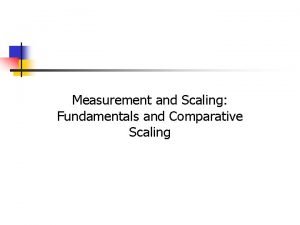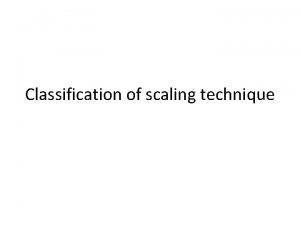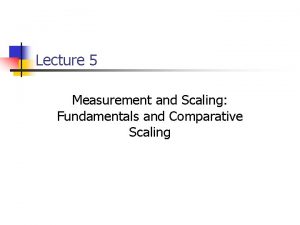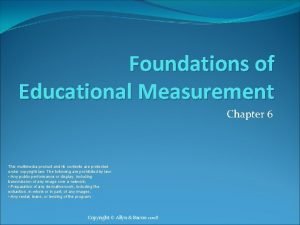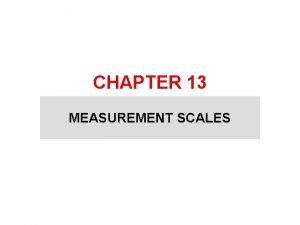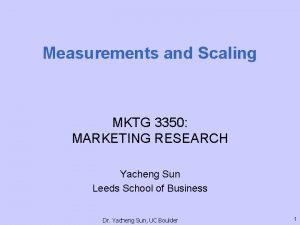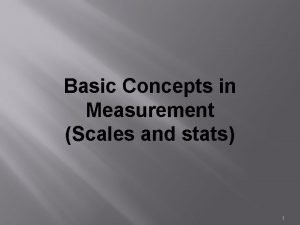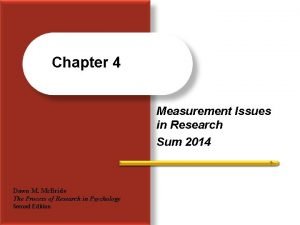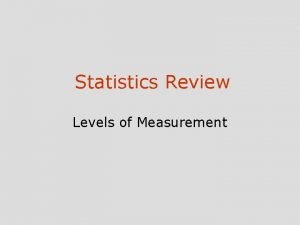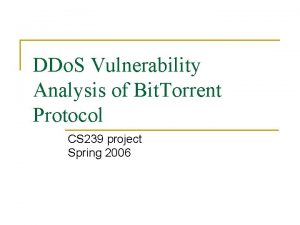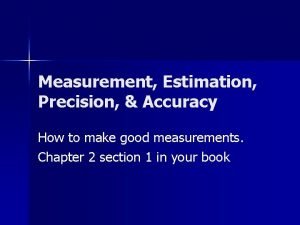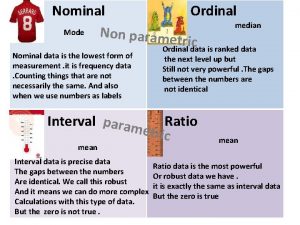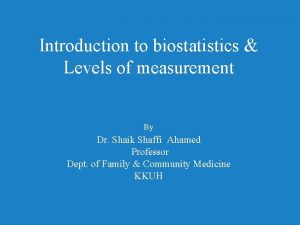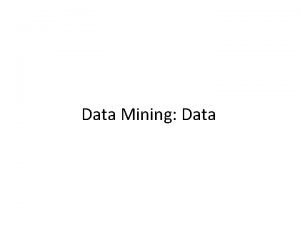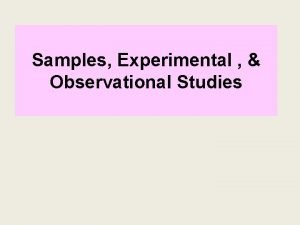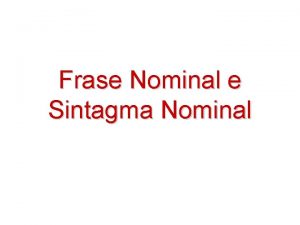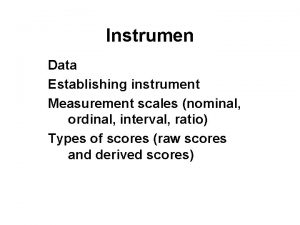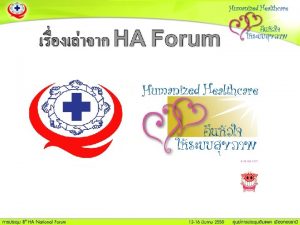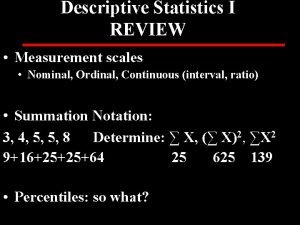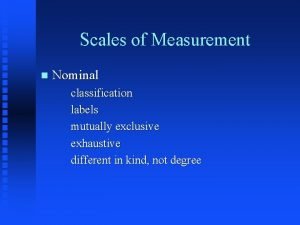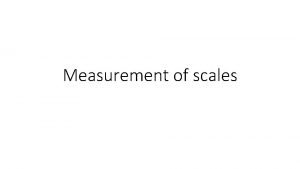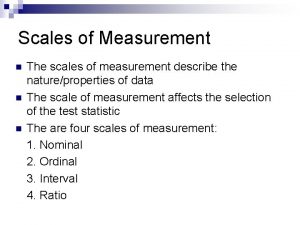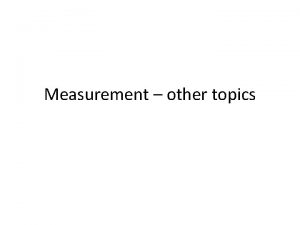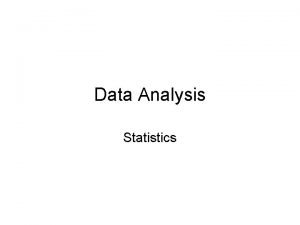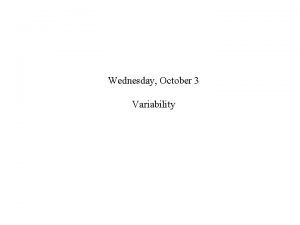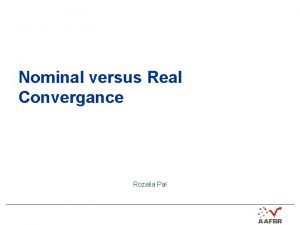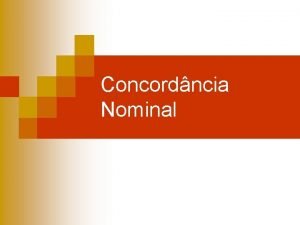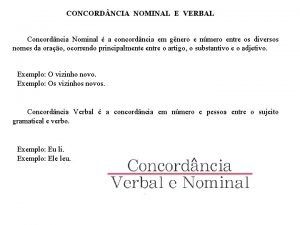EXPERIMENTS DATA ANALYSIS MEASUREMENT SCALES NOMINAL SCALES Use
























- Slides: 24

EXPERIMENTS: DATA ANALYSIS

MEASUREMENT SCALES

NOMINAL SCALES Use of numbers to name or categorize § Ex: § driver’s license § Student Number

ORDINAL SCALES Numbers represent serial position § Ex: § Class Rank § age

INTERVAL SCALES Equally spaced measurement units § Ex: § Fahrenheit temperature § Personality Scales

RATIO SCALES Interval scale with true zero § Ex: § Pounds § Kelvin scale

FREQUENCY DISTRIBUTION

FREQUENCY DISTRIBUTION Organization of data by the number of times a score occurs per data point

FREQUENCY DISTRIBUTION Pie Graph Histogram

FREQUENCY DISTRIBUTION Polygon-frequency data with line drawn from point to plotted point Line graph-indicates changes that occur between variables

STATISTICAL ANALYSIS OF RESULTS

DESCRIPTIVE STATISTICS Organization of data for communication/understanding Central tendency: § composite numbers describing the distribution of scores

CENTRAL TENDENCY Mean § Arithmetic average of a set of scores Median § Score falling midpoint among all the scores ordinally ranked Mode § Most frequently occurring score or data point

LET’S CONSIDER THE DATA…. Miss Dryer gives a practice test, and the scores were as follows… What is our…. § Mean? § 7 § Median? § 7 § Mode? 9, 8, 9, 7, 4, 10, 7, 6, 8, 7, 7, 2, 8, 3 § 7

MEASURES OF VARIABILITY Tells us how much variation, or “spread” there is in the group of scores Range: § Difference between the lowest and highest scores Standard Deviation: § Measures the average difference between each score and the mean of the data set.

CORRELATIONAL COEFFICIENTS Describes the direction and strength of the relationship between two variables § The sign (+ or -) describes direction § The numerical value (r) can vary from -1. 00 to +1. 00. The larger the (r), the stronger the relationship

CORRELATIONS Positive Correlation § Two variables change in the same direction (as X increases, so does Y) and vice versa Negative Correlation § Two variables change in opposite directions (as X increases, Y decreases) and vice versa

THE NORMAL DISTRIBUTION When most of the scores fall in the middle of a distribution § With few extreme scores § Mean, median, and mode all have the same value

SKEWED DISTRIBUTION

INFERENTIAL STATISTICS Used to reach conclusions beyond immediate test data The t test § Examines difference between Means § Did difference occur… § Due to chance? § Due to IV? Teachers may use to compare class data

STATISTICALLY SIGNIFICANT Possibility that the differences in results between the experimental and control groups could have occurred by chance is no more than 5 percent Must be at least 95% certain the differences between the groups is due to the independent variable

INFERENTIAL STATISTICS Statistically significant: § High probability that research results are not due to chance § Typically 5%, or. 05

PRACTICE MULTIPLE CHOICE Which of the following sets of scores has the greatest standard deviation? § 5, 7, 9, 12 § 2, 7, 9, 22 § 25, 27, 29, 32 § 50, 51, 52, 53 § 100, 101, 102, 103

 Primary scale of measurement
Primary scale of measurement Example of nominal questions
Example of nominal questions Types of error in measurement
Types of error in measurement Measurement and scaling
Measurement and scaling Types of scales in educational measurement
Types of scales in educational measurement Marketing measurement scales
Marketing measurement scales Scales of data
Scales of data Types of measurement in research
Types of measurement in research Primary scales of measurement in marketing research
Primary scales of measurement in marketing research Types of measurement scales
Types of measurement scales Marketing measurement scales
Marketing measurement scales Property of moreness
Property of moreness 4 measurement scales
4 measurement scales 4 measurement scales
4 measurement scales Nominal measurement
Nominal measurement Nn torrent
Nn torrent What measurement does a graduated cylinder use
What measurement does a graduated cylinder use Ordinal vs nominal
Ordinal vs nominal Examples of ordinal data
Examples of ordinal data Nominal attribute in data mining
Nominal attribute in data mining Data reduction in data mining
Data reduction in data mining Wonder taste
Wonder taste Test your hypothesis
Test your hypothesis Observational study examples statistics
Observational study examples statistics 1980-1896
1980-1896
